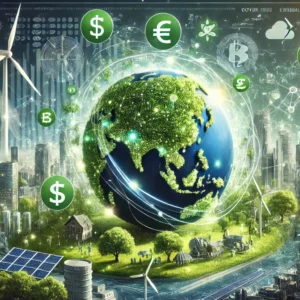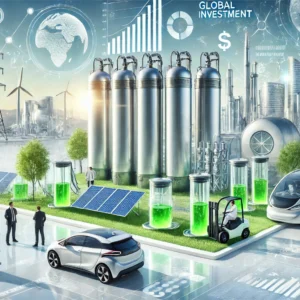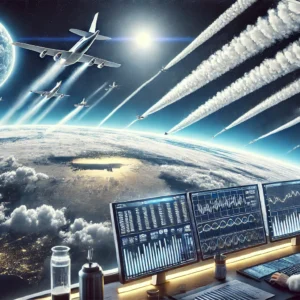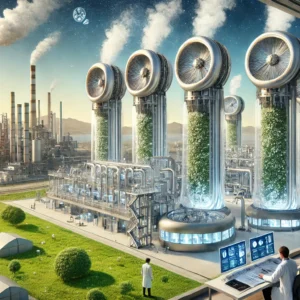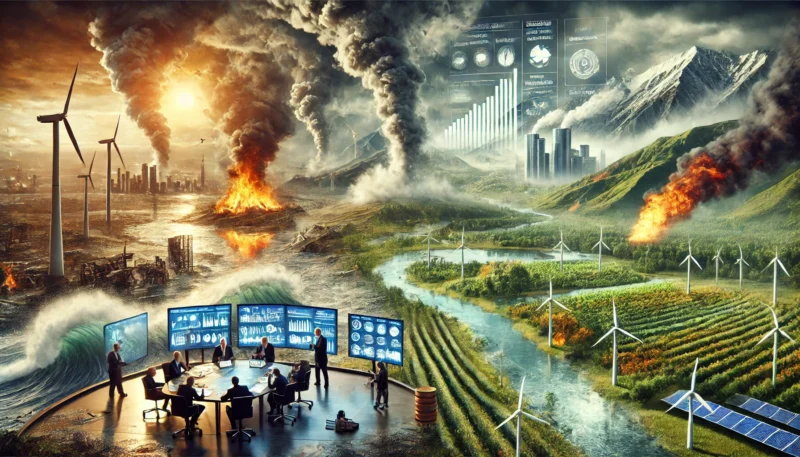
The world’s economic landscape and the state of our environment are colliding in ways that are both awe-inspiring and, frankly, a bit nerve-wracking. In 2025, large-scale economic events—be they booming markets or sudden downturns—mix with environmental upheavals such as extreme weather, groundbreaking sustainable energy solutions, and major policy shifts on climate change. This isn’t just abstract theory; it’s a daily reality that affects our jobs, our health, and even our cultural outlook. Buckle up, because we’re about to take a wild ride through the intertwined realms of economic and environmental factors shaping our near future.
The Economic Rollercoaster: Crises, Booms, and Beyond
Economic events, whether crises or booms, have long-lasting impacts that seep into every corner of society. When economies surge or stumble, the effects ripple outward—from influencing government decisions to altering individual lifestyles.
Key Economic Highlights:
- Rapid Growth Periods:
- When markets boom, investment surges, creating a fertile ground for innovation and growth.
- Historical booms have often led to increased consumer spending, job creation, and a vibrant entrepreneurial culture.
- Economic Downturns:
- Crises, whether triggered by global events or local issues, often bring about job losses, market instability, and tighter government regulations.
- Past recessions remind us that recovery can be slow, with long-lasting impacts on communities and industries.
- Shifting Priorities:
- Economic turbulence often forces individuals and policymakers alike to reassess their priorities—sometimes with surprising, innovative outcomes.
A look back at recent events—from the financial crises that sent shockwaves around the globe to unexpected booms in emerging markets—shows that economic cycles are as unpredictable as they are influential. Trusted outlets like Reuters and Bloomberg provide up-to-the-minute reporting on these trends.
Environmental Upheavals: Weathering the Storm
While the economy rides its rollercoaster, our environment is also in a state of flux. Climate-related events—ranging from unprecedented storms to breakthrough sustainable energy initiatives—are reshaping how we view the world and our place within it.
Environmental Events Making Headlines:
- Severe Weather Patterns:
- Extreme weather events, including record-breaking heat waves, floods, and hurricanes, are no longer anomalies.
- Such events challenge existing infrastructure and call for urgent adaptations in urban planning.
- Policy Shifts on Global Warming:
- Governments worldwide are now forced to grapple with the realities of climate change, leading to new environmental regulations and green policies.
- Recent policy overhauls in the European Union and North America emphasize renewable energy and carbon neutrality.
- Sustainable Energy Breakthroughs:
- Innovations in solar, wind, and even fusion energy offer promising solutions to reduce our reliance on fossil fuels.
- Start-ups and established energy companies are collaborating to bring these technologies to the mainstream market.
These environmental dynamics are as unpredictable as economic trends. For the latest updates, sources like The Guardian – Environment and National Geographic are indispensable.
Government Insights and Political Overtones
Governments around the globe are in the thick of these economic and environmental shifts. Their policies not only shape national trajectories but also set the tone for global responses.
Government and Political Notes:
- Policy Reforms:
- In reaction to economic crises and environmental disasters, policymakers are introducing comprehensive reforms aimed at sustainability and stability.
- For example, the U.S. recently unveiled initiatives to bolster renewable energy infrastructure while providing relief packages during economic downturns.
- Public-Private Partnerships:
- To accelerate progress, governments are increasingly collaborating with private entities. These partnerships drive innovation in both economic recovery and environmental sustainability.
- Political News:
- Outlets such as BBC News – Business and CNN Business frequently cover the political maneuvers behind these reforms, offering deep dives into how policy decisions impact both markets and the environment.
A snippet from a recent government press release noted, “Our commitment to a green economy is unwavering. Every policy, every regulation, is designed to forge a future where economic vitality and environmental sustainability go hand in hand.”
Research Labs and Scientific Perspectives
The pulse of change is often felt in the research labs, where scientists tirelessly explore new ways to address economic disparities and environmental challenges. These endeavors are not merely academic; they are the building blocks of tomorrow’s solutions.
Research Highlights:
- Economic Research:
- Numerous studies have dissected the causes and effects of economic downturns, offering insights into recovery strategies.
- Research from institutions like Harvard and the London School of Economics shows how fiscal policies and market interventions can mitigate downturn impacts.
- Environmental Science:
- Cutting-edge research into renewable energy and climate resilience is constantly evolving.
- Articles published in journals like Science and Nature detail breakthrough methods in carbon capture and sustainable resource management.
- Interdisciplinary Studies:
- A growing body of work examines how economic policies influence environmental outcomes and vice versa, revealing a complex interplay that defies simple explanations.
Below is a table summarizing some recent research findings:
| Research Focus | Key Findings | Institutions/References |
|---|---|---|
| Economic Recovery Models | Fiscal stimulus can significantly reduce the impact of recessions. | Harvard, London School of Economics |
| Renewable Energy Innovations | Advances in solar and wind technologies are making sustainable energy more viable. | MIT, Nature, Science |
| Interplay of Economy & Environment | Integrated policies yield better outcomes in both economic stability and climate resilience. | Oxford, Stanford, Various Think Tanks |
These studies emphasize that solutions lie at the intersection of economic policy and environmental science—a sweet spot where innovative ideas can flourish.
Voices Across the Spectrum: From Celebrities to Everyday Folks
When we talk about economic and environmental shifts, the conversation extends far beyond boardrooms and research labs. It permeates our everyday lives, inspiring opinions from a broad spectrum of voices.
Celebrity and Influencer Perspectives:
- Leonardo DiCaprio:
- “We are at a critical juncture. The choices we make today in how we treat our environment and manage our economy will dictate the future for generations to come.”
- Emma Watson:
- Often vocal about sustainable fashion and ethical consumerism, she emphasizes, “Economic progress should never come at the expense of our planet.”
- Other Public Figures:
- Celebrities like Mark Ruffalo and Shailene Woodley have also weighed in, calling for a more sustainable approach to economic growth.
Public Sentiments Across Generations:
- Older Generations:
- Many reminisce about times when the economy was stable and the environment seemed less volatile. There is a nostalgic longing for simpler times, coupled with genuine concern over rapid changes.
- Younger Voices:
- Youth today are digital natives, brimming with energy and ideas. They see these challenges as opportunities for radical innovation and are quick to mobilize via social media platforms.
- Community Leaders:
- Grassroots activists and local leaders often serve as the bridge between policy and public sentiment, ensuring that real-world impacts are not ignored.
These diverse perspectives illustrate that economic and environmental issues are not just statistics on a page—they are deeply personal, affecting every layer of society.
Global Business and Revenue Realities
Economic booms and busts, intertwined with environmental challenges, significantly impact global business landscapes. How companies react—and thrive—in this environment tells a compelling story of adaptability and innovation.
Key Business Trends:
- Market Adaptations:
- Companies are increasingly investing in sustainable practices to not only reduce their environmental footprint but also to tap into a growing market of eco-conscious consumers.
- Industries ranging from automotive to consumer goods are rethinking their operations in light of environmental imperatives.
- Revenue Shifts:
- Economic booms often lead to a surge in global revenue, but downturns can be just as transformative—forcing businesses to innovate or perish.
- The rise of green technologies has opened new revenue streams for companies willing to adapt.
- Investment Flows:
- Venture capital and private equity are seeing a steady increase in investments in sustainable startups and technologies.
- Investors are now looking at not just financial returns, but also social and environmental impact.
Below is a table summarizing these global business trends:
| Sector | Impact | Examples |
|---|---|---|
| Tech & Renewable Energy | Boom in sustainable innovations leading to increased investment and market growth. | Solar panel manufacturers, wind turbine companies |
| Traditional Industries | Rapid digital transformation and sustainability initiatives to maintain market relevance. | Automotive, retail, manufacturing sectors |
| Financial Markets | Volatile yet opportunistic, with investors increasingly favoring sustainable ventures. | ESG-focused investment funds, green bonds |
“A table summarizing global business impacts, including tech, traditional industries, and financial market trends in sustainability.”
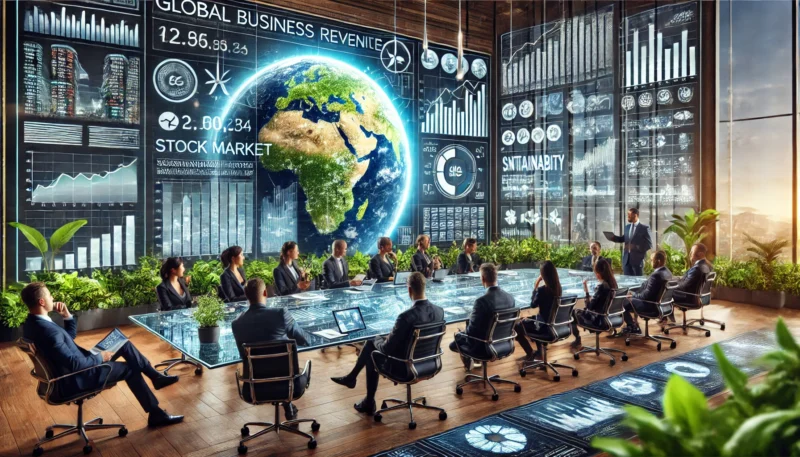
These trends highlight that the future of business is not solely about profit—it’s equally about purpose, sustainability, and resilience.
Navigating the Intersection: Practical Guides for a Changing World
With so many forces at play, staying informed and proactive is more important than ever. Here are some practical tips to help you navigate these economic and environmental shifts:
Quick Tips for Staying Ahead:
- Stay Informed:
- Follow reliable sources like Financial Times, The Economist, and Environmental News Network for up-to-date information.
- Engage Locally:
- Participate in community meetings or local policy discussions. Grassroots initiatives can often drive meaningful change.
- Invest in Sustainability:
- Whether it’s energy-efficient appliances at home or sustainable investments, every little bit counts.
- Embrace Digital Tools:
- Use apps and online platforms that track economic and environmental trends to stay ahead of the curve.
- Network and Learn:
- Attend webinars, virtual conferences, or local workshops that cover topics on economic policy and environmental sustainability.
A Handy Checklist:
- Subscribe to major economic and environmental news outlets.
- Join local community forums or social media groups focused on sustainability.
- Regularly check government and policy updates.
- Explore online courses or webinars on green economics and sustainability.
- Engage with both scientific research and real-world business case studies.
FAQs
Q1: How do economic booms and downturns affect our daily lives?
A: Economic cycles influence everything from job availability and consumer spending to government policies and community development. Booms can spur innovation and job growth, while downturns often force a reassessment of priorities and spur innovation in unexpected ways.
Q2: What environmental events are most likely to shape global attitudes?
A: Extreme weather events, significant policy shifts on climate change, and breakthroughs in sustainable energy are among the key drivers. These events not only reshape the physical environment but also influence public sentiment and policy decisions.
Q3: How are governments responding to these intertwined economic and environmental challenges?
A: Governments worldwide are adopting new policies, forging public-private partnerships, and investing in sustainable initiatives to balance economic growth with environmental preservation.
Q4: Why is there such a focus on sustainable practices in business today?
A: As consumers become more eco-conscious and regulatory pressures increase, businesses see sustainability as a competitive advantage. It’s about reducing risks, fostering innovation, and tapping into new markets.
Q5: Where can I find reliable updates on these topics?
A: Trusted sources include Reuters, Bloomberg, The Guardian – Environment, and specialized research publications from institutions like Harvard and MIT.
Wrapping Up: Embracing a Future of Change
The interplay between economic forces and environmental realities is more intricate than ever before. In 2025, we’re witnessing a profound transformation—one where global economic trends and environmental shifts intersect to redefine the way we live, work, and interact. Whether you’re a business leader adapting to market volatility, a policymaker striving for sustainable growth, or a citizen concerned about our planet’s future, the message is clear: our actions today shape the world of tomorrow.
As we forge ahead, let’s keep our eyes on the horizon while staying grounded in actionable insights. The blend of rigorous economic analysis, breakthrough environmental science, and diverse voices—from government officials to community activists—ensures that our future is not just reactive, but resilient and innovative.
If this exploration into the economic and environmental factors shaping our world has sparked your curiosity, why not dive deeper? Engage with trusted sources, share your thoughts, and be a part of the conversation. Every perspective matters, and together, we can chart a course towards a more sustainable, balanced future.
External Links:

